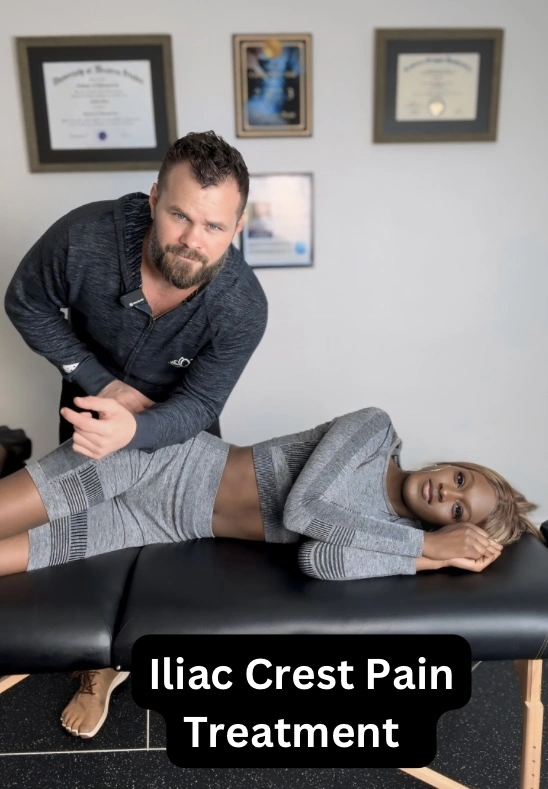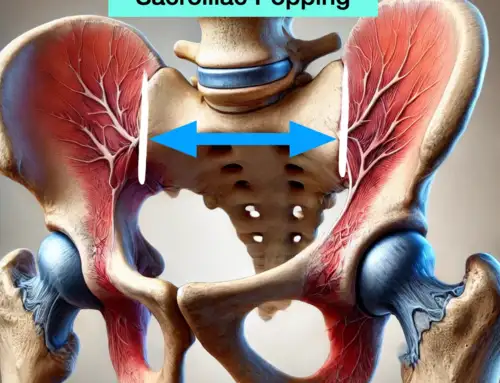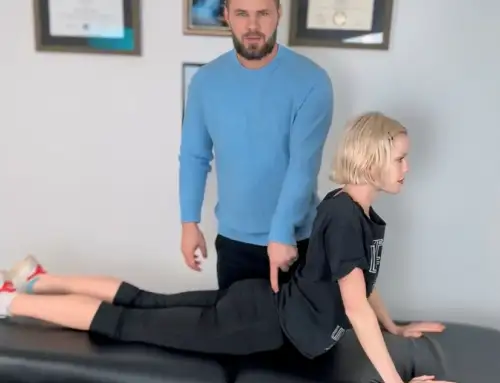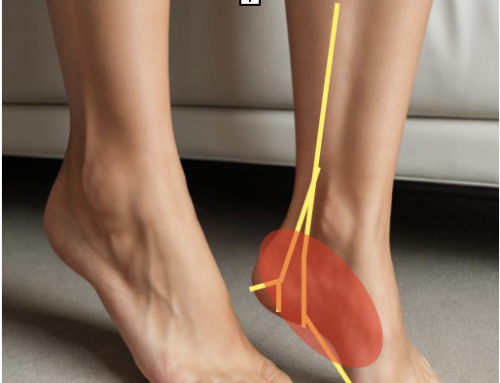Relieve Iliac Crest Pain: Up To Date Treatments

Various factors, such as overuse or injury, can cause pain over the iliac crest. Consulting a healthcare professional for proper diagnosis and treatment is essential to prevent further complications. Rest, ice, and gentle stretching may help alleviate discomfort. pain over the iliac crest
Having soreness in the iliac crest area might have a negative influence on your everyday routine. As a chiropractor with significant experience treating this disease, I want to give you a thorough knowledge of the uncomfortable pelvic girdle and how it may impact your life.
Introduction
The crest of the ilium refers to the curved ridge at the top of your pelvic region. It is an attachment site for various lower back, abdomen, and hip muscles. When these muscles are strained or injured, it can result in pain in the iliac crest region. This article gives general information about pain over the ilium pelvic bone and its relation to lower back and hip pain.
Check out the treatment section for the most up-to-date treatment methods in 2024!
Identifying Common Causes and Treatments
- Iliolumbar ligament Inflammation- tears can occur in this ligament due to repetitive microtrauma or falling.
- Pregnancy or childbirth
- Musculoskeletal injuries: Overuse or trauma to the muscles surrounding the iliac crest can cause tenderness and discomfort.
- Dysfunction in the Sacroiliac Joint: Issues within the joint connecting the sacrum and pelvis can lead to referred pain in the iliac crests from
 putting additional strain on the iliolumbar ligament.
putting additional strain on the iliolumbar ligament. - Nerve Compression: Pressure on nerves near the iliac crests can cause radiating pain—primarily the cluneal and subcostal nerves. Swelling or inflammation of these needs causes tenderness over the crest.
- Hip flexor strain: iliopsoas muscle or rectus femoris causing an anterior pelvic tilt (forward) and also refers to pain in the area.
- Pelvic floor dysfunction- musculoskeletal weakness of the pelvic floor muscles causing pelvic disorders.
- Inflammatory Conditions: Ailments such as arthritis or bursitis may trigger inflammation and pain in the hip joints and pelvis.
- Spinal Referral- facet syndrome of the thoracolumbar junction
- Anterior Pelvic tilt- this oblique angle of the pelvis causes an increase in lordosis in the lumbar spine.
- Iliotibial band tightness
The causes of discomfort over the iliac crest overlap with causes of lower back pain, sacroiliac dysfunction, and hip pain. All of which need to be a part of the evaluation process. This article will focus on the pelvic girdle.
Best Treatment Options
 Manual therapy: Nerve mobilizations of the cluneal and subcostal nerve can be beneficial treatments to address inflammation and pelvic dysfunction.
Manual therapy: Nerve mobilizations of the cluneal and subcostal nerve can be beneficial treatments to address inflammation and pelvic dysfunction.
Fascial Manipulation: Treatment for aggregated hyaluronic acid causing stiffness in the posterior thoracolumbar fascia, groin, over the lateral spine (quadratus), iliotibial band, and gluteus medius muscles. These structures attach to the ilium bone and can cause pathologies over the bone.
Core Rehabilitation: generally, the oblique muscles (obliques) are weak or lack stability during spinal stabilization activities, which can cause irritated tissues around the bone.
Manual therapy methods to address the sacroiliac joint, hip joint, and lower back are helpful.
Traditional treatments include:
- Physical Therapy: Strengthening pelvic muscles and enhancing flexibility through personalized exercise regimens and techniques like manual therapy or ultrasound. Strength training and stretches included.
- Pain Management Techniques: Utilizing heat/cold packs, TENS therapy, or acupuncture for temporary relief.
- Medication: Nonsteroidal anti-inflammatory drugs (NSAIDs), muscle relaxants, and topical analgesics can help reduce inflammation and alleviate pain. Prolotherapy is also an option.
- Surgical Options: Nerve decompression surgery or ligament repair/reconstruction may be necessary in severe cases.
- Prolotherapy Injections: an alternative therapy that aims to stimulate the healing process of soft tissues and joints.
Recognizing Symptoms and Impact on Daily Life
Pain can manifest as a persistent ache or sharp stabbing sensation in the lower back or hips. The severity of the pain can range from mild discomfort to excruciating agony. This condition can hinder mobility, make sitting for prolonged periods uncomfortable, impede standing up from seated positions, and make physical exercises challenging.
Diagnosis
Palpation by expert knowledge of the anatomy of the structures that connect or cross the ilium could quickly determine the source of the pain. An experienced doctor can differentiate between bone, ligaments, tendons, and myofascial stiffness. Often the best method of diagnosis.
Diagnostic methods such as X-rays, MRIs, and CT scans can be performed for more accurate diagnosis.
Prevention
Prevention plays a crucial role in avoiding aggravating pain. Lifestyle adjustments and habits that can help prevent this condition include:
- Maintaining a healthy weight.
- Regular exercise.
- Practicing proper posture.
- Ensuring ergonomic surroundings.
- Incorporating stretching and flexibility exercises.
- Warming up before physical activity.
- Avoiding repetitive movements.
- Getting enough restful sleep.
Doing side plank exercises is the best prevention to strengthen the oblique core muscles. Current research suggests that holding a side plank for three minutes protects against lower back pain and pelvic disorders.
Choosing the Right Healthcare Provider
When seeking treatment, it is essential to select the right healthcare provider. Collaborating closely with your healthcare team, exploring treatment options, and accessing reliable resources and support systems are critical in effectively managing this condition.
Search our website to query (find) additional articles on other pelvic girdle structures.
Reach out to Dr. Dean (sports doctor) in California by texting (best), calling 323-354-6077, or emailing at drjustindean@gmail.com
Our editorial practices include evidence-based practices, interventions, and recommendations.
Model RubiTimbo on facebook

Dr. Justin Dean is the only one I trust my whole family with. NCA is outrageously effective.
Sean Rad
Founder of Tinder

Dr. Dean fixed my chronic tension headaches in a visit and had me SLIVING (slaying + living) in no time!
Paris Hilton
Entrepreneur, DJ, Media Personality

Within 15 seconds of working with him I squatted pain free for the first time in 8 years. Dr. Dean gave me my life back.
Sam Moore
Former Elite Volleyball Player

I have trusted Dr. Dean with my elite athletes and my own nagging injuries! I recommend his services to any athlete looking for support.
Bradford Scott
Head Sports Performance Coach, Atlanta Braves





